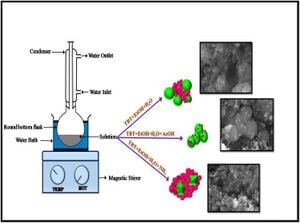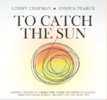Dual morphology titanium dioxide for dye sensitized solar cells

Anatase TiO2 displaying dual morphologies were synthesized with a simple chemical route via a single step. A strong correlation between the dye sensitized solar cell (DSSC) device performance and the obtained dual morphologies are highlighted using relevant evidences from UV-vis and diffuse reflectance spectroscopy (DRS), Raman analysis, field emission scanning electron microscope, high resolution transmission electron microscope, current-voltage characteristics and impedance analysis. Structural investigation revealed that the interested medium in this work employed for the synthesis of TiO2 produced different types of dual morphologies such as nanospheres with nanoparticles (NSNP), microsphere decorated with nanoparticles (μSNP) and nanoparticles with stone like features (NPS). UV-vis and DRS results indicated the ability of the materials to assist with diffused reflectance and optical absorption of the screen printed photoanodes. In addition, an investigation of Raman vibrational characteristics was carried out in detail using synchronous and asynchronous 2D correlation analysis. The high intense Eg anatase mode of Raman spectrum was simulated using a phonon confinement model and its normalised spectra are compared with an experimental data. The resultant performances in the DSSCs were not indicative by the material properties; so, the charge transfer resistance (Rct) and recombination properties of the photoanode were investigated. These results showed that the Nyquist plot of NSNP possesses the smallest diameter, which reveals that the device based on NSNP offers the lowest Rct value that accounts for the higher conversion efficiencies when compared with the DSSC device based on photoanodes μSNP and NSP. It can be concluded that the improved power conversion efficiency shown by photoanode fabricated using NSNP has the dual role of optimum surface area for dye loading and light scattering centres. These properties, when optimized along with the offered pathway for electrolyte diffusion to the dye degeneration with less Rct, could lead to better photoelectric conversion efficiency.
Keywords[edit | edit source]
Dual morphology, Screen printing, 2D correlation, Phonon confinement,TiO2, dye sensitized solar cell
See also[edit | edit source]
- Effect of microwave power irradiation on TiO2 nano-structures and binder free paste screen printed dye sensitized solar cells
- Peanut shaped ZnO microstructures: controlled synthesis and nucleation growth toward low-cost dye sensitized solar cells
- Reaction Induced Multifunctional TiO2 Rod/Spherical Nanostructured Materials for Screen Printed Dye Sensitized Solar Cells
- Enhanced Dye-Sensitized Solar Cell Performance using Strontium Titanate Perovskite Integrated Photoanodes Modified with Plasmonic Silver Nanoparticles
- Microwave-Assisted Synthesized Gadolinium Doped Barium Strontium Titanate Nanostructures: Structural and Optical Properties for DSSC Applications
- Impact of Coupled Plasmonic Effect with Multishaped Silver Nanoparticles on Efficiency of Dye Sensitized Solar Cells
- The use of urea as an N-doping 3D hierarchical preserving agent for titanium dioxide nanostructures tailored for dye-sensitized solar cells
- Visible light driven photocatalytic performance of 3D TiO2/g-C3N5 nanocomposites via Z-scheme charge transfer promotion for water purification
- Fabrication of Bimetallic Inlaid Working Electrode for Highly Efficient Dye Sensitized Solar Cells





